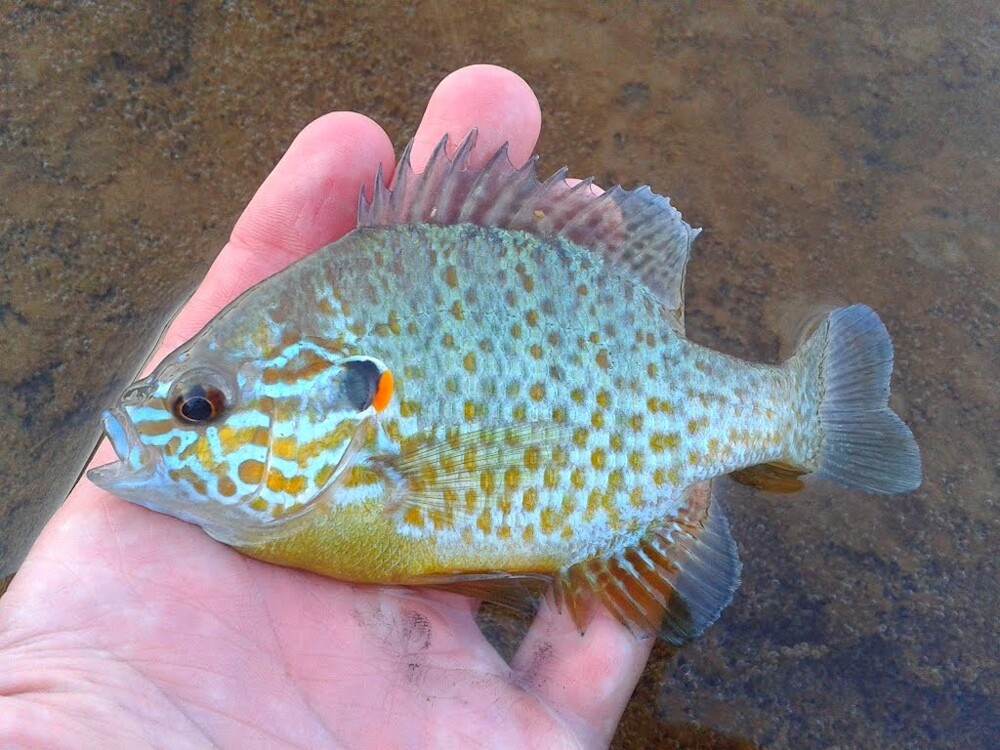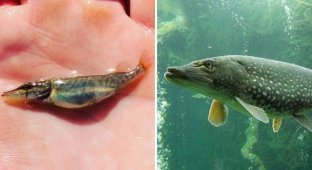Sunny perch: the fish drives normal perches out of reservoirs and reproduces uncontrollably (10 photos)
A bright and harmless-looking fish, due to its gluttony and rapid reproduction, displaces other fish from their habitats. 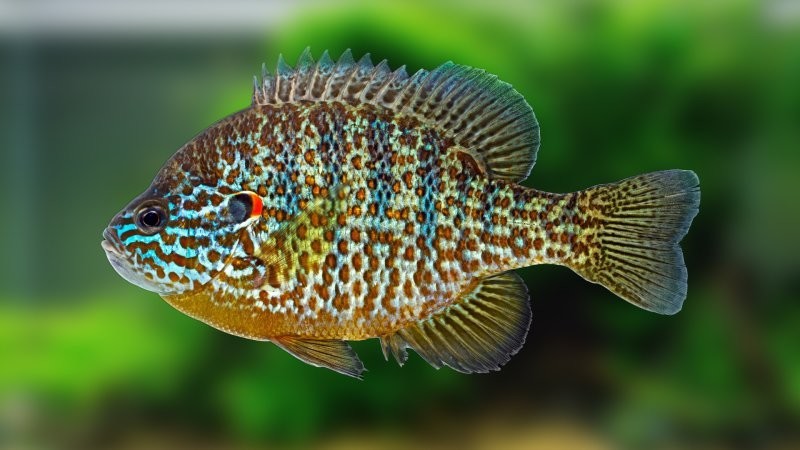
Redfish are a global problem. Back in the days of Victorian England, it escaped from its habitat and turned the lives of Asian, African and Australian fish into a nightmare. But in the 20th century the situation changed dramatically. There was a fish capable of driving the perch out even from its original possessions. And her name is sunny perch. 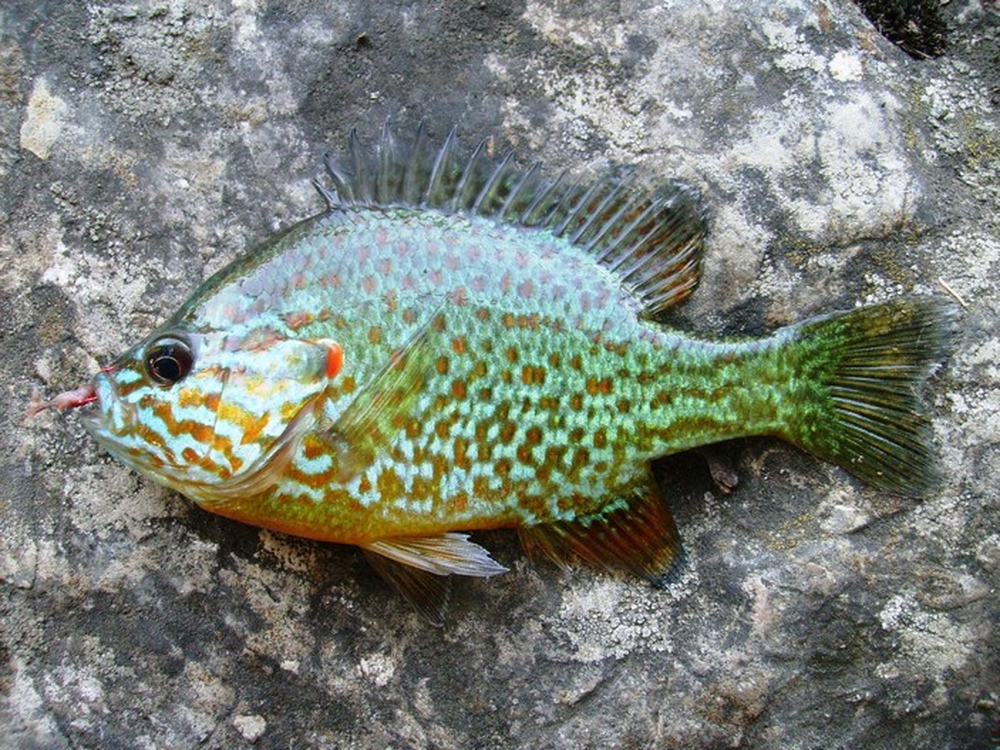
Sunny perch in Crimea, 2010
It is not difficult to guess that the fish are relatives. But not that close. After all, sunfish are a typical inhabitant of water bodies in North America. Their paths diverged millions of years ago. The family reunion would not have happened without the help of aquarists. They fell in love with the rainbow scales of American fish and began exporting them to Europe. 
Americans call the sunflower a “pumpkin seed.”
At first the situation did not look dangerous. No one thought that the foreign perch would survive in the river systems of Europe. After all, with such bright scales, it should have been an attractive prey for predators. And the low fertility, only 200-500 eggs (versus 120-300 thousand for European perch) should not have offset the population decline. 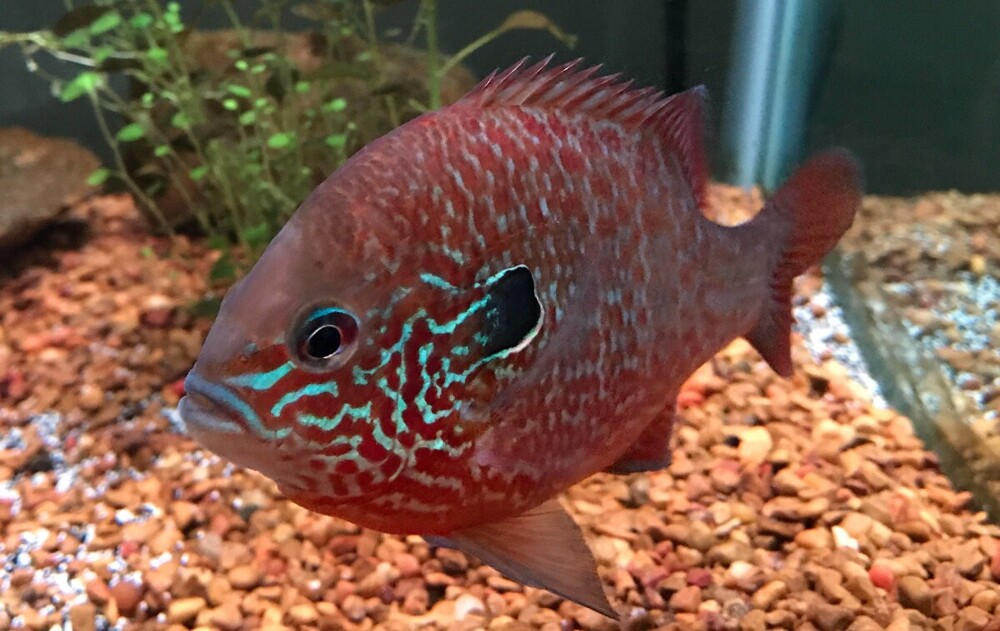
Well, people were proven wrong. They left out several important points. Firstly, before us is a perch with all the ensuing consequences. The scaly fish is extremely tenacious, able to adapt to a wide range of temperatures and feel comfortable in brackish water. Yes, he loves rocky bodies of water warmed by the sun most of all, but if necessary, he is able to live in overgrown lakes or populate a river, reaching it along the seashore. 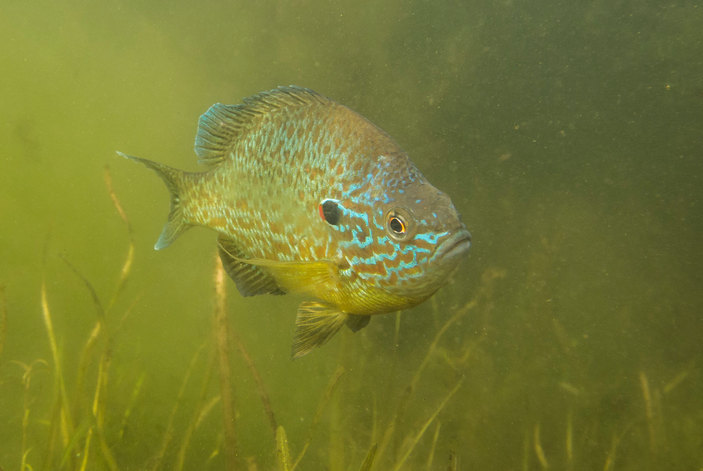
And his diet is just as flexible. Carrion? No problem! Aquatic bugs and larvae? Certainly! Fry of other fish? Well, naturally! A fish up to 30 centimeters long is capable of devouring even the offspring of its competitors and predators, getting rid of problems in the bud. 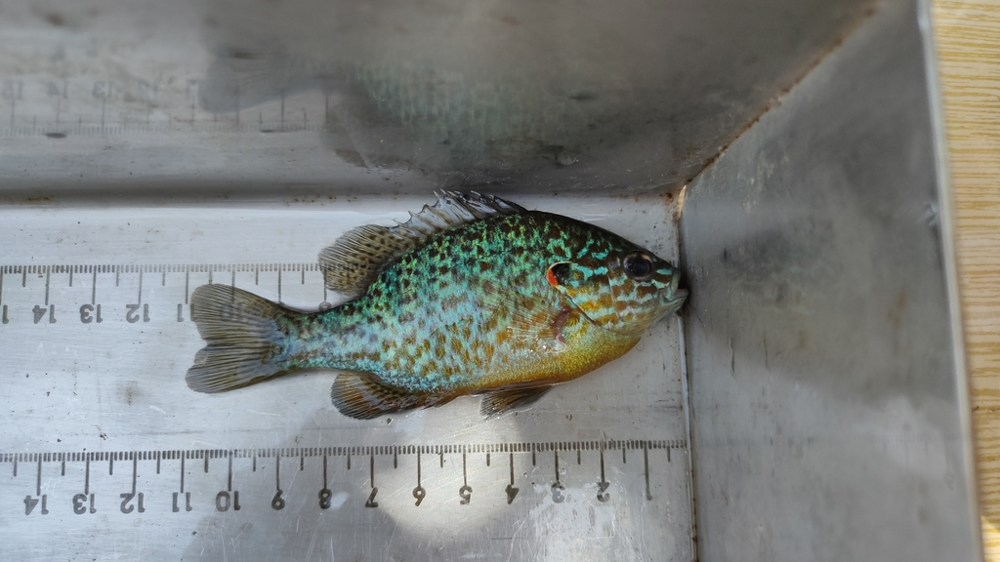
But 30 centimeters is rare. The size of most individuals does not exceed 10 centimeters.
And even the rainbow coloring of the fish could not spoil the situation. It turned out that sunfish willingly adapt camouflage to local conditions throughout their lives. It remains as bright, but its dappled appearance matches that of its surroundings. 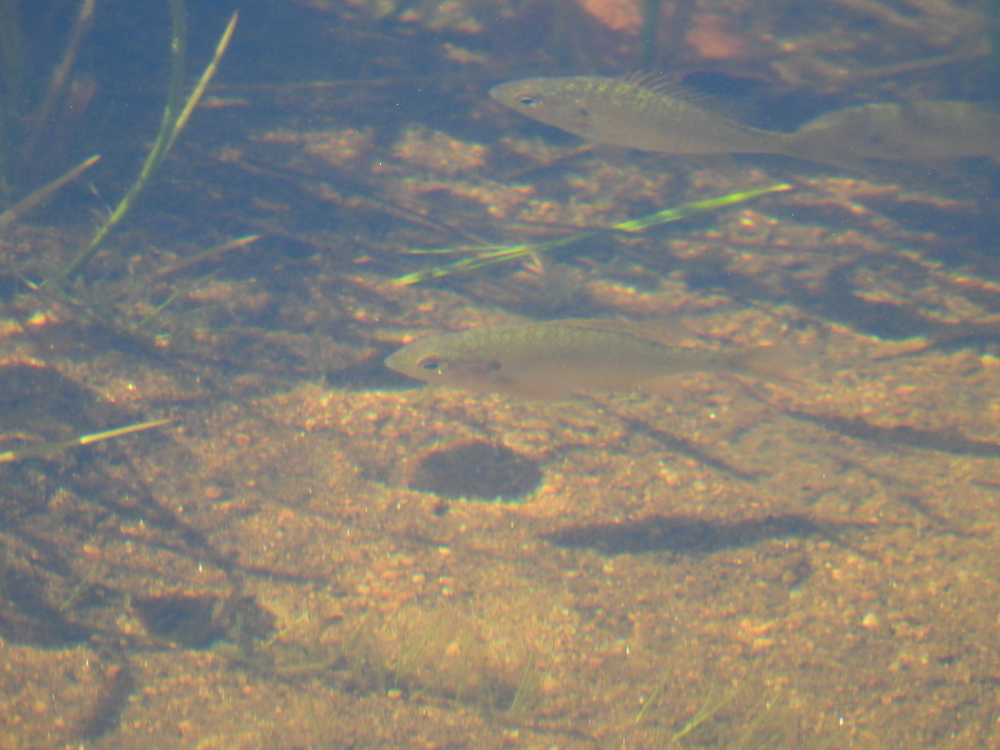
In the wild it is not so noticeable...
Well, the decisive argument turned out to be an unusually developed parental instinct. Yes, each female lays no more than 500 eggs, but the offspring remain under the protection of the father even in the first days after hatching!
The situation is like this: when the water temperature reaches 13°C, the desire to create awakens in male sunfishes. They dig holes, collect stones into circles and hills with depressions in the center. In general, they build classic nests, like those of land birds. And then the architects fall asleep and the dancers wake up. The male hovers over the nest and catches the sun's rays with his rainbow scales. 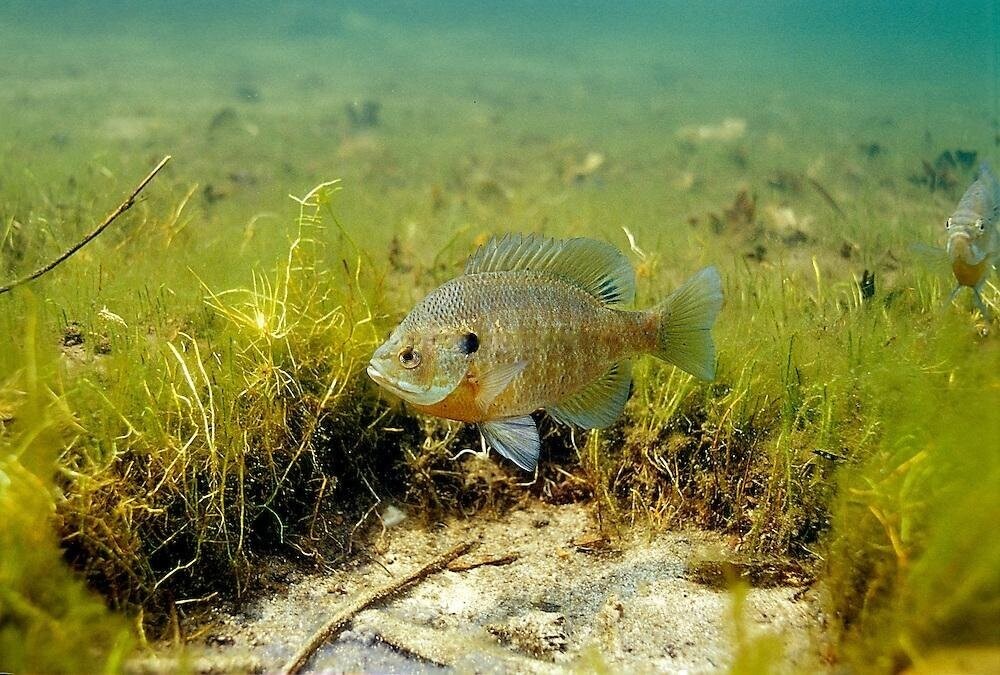
In the area of the nest, the perch tears out all the vegetation.
The brighter it shines, the more females will lay eggs in its nest. And then the guy will impregnate them all at once and remain to guard the maternity ward. In the following weeks, the sunfish will feed only on intruders: small fish and invertebrates coveted by eggs. And even when the babies hatch, he will not leave his post. The offspring will remain in the nest until they have completely digested the embryo sacs - a supply of nutrients for the first days of life. And only then will the male consider his service completed. 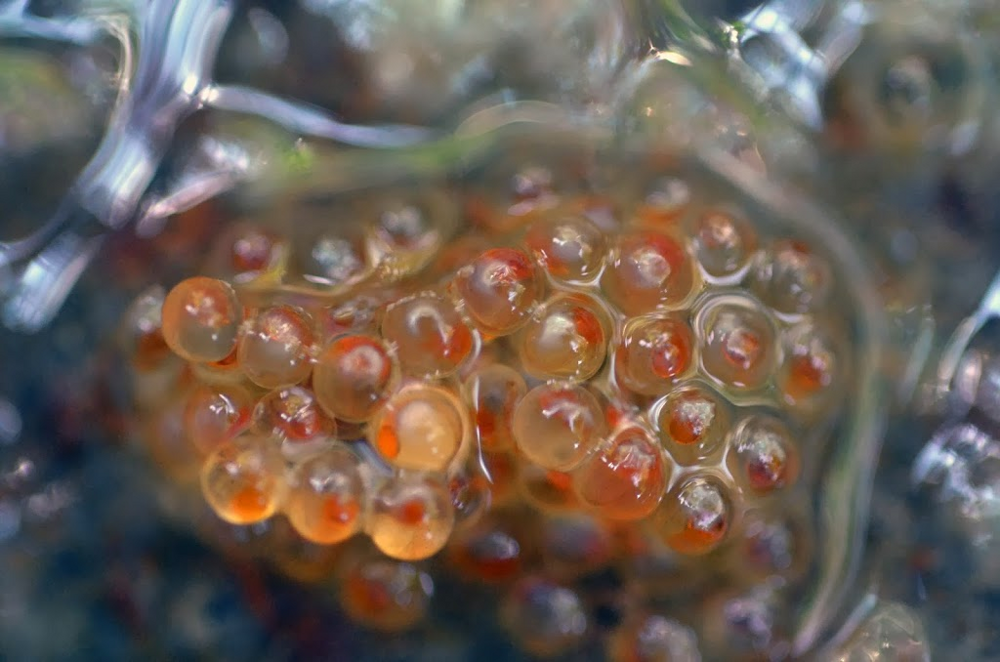
Their eggs also attract attention with their colors.
However, do not rush to praise him for his dedication. At the first sign of danger, the guy bolts, leaving the kids to fend for themselves. And this is also useful for the spread of the species. The surviving male will be able to reproduce in the nextyear, and the offspring will not necessarily die. Babies are capable of an active life immediately after birth, they will be able to survive. 